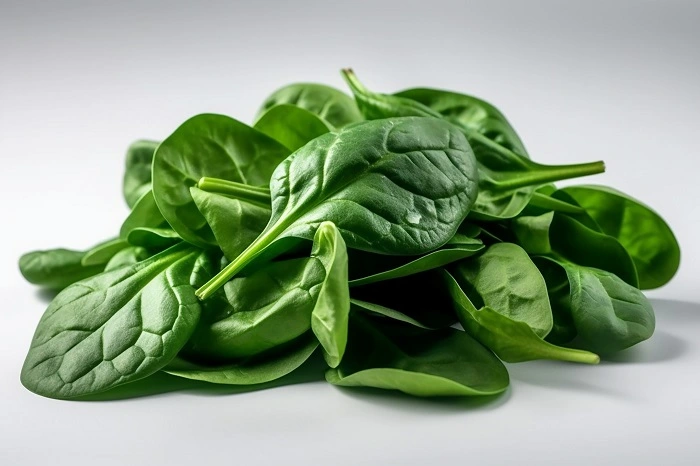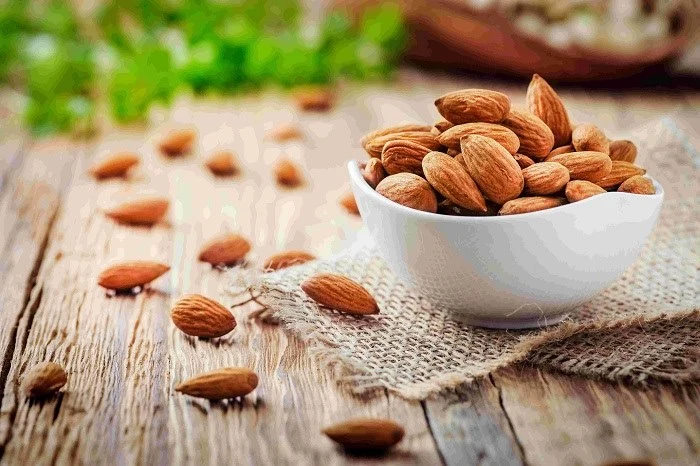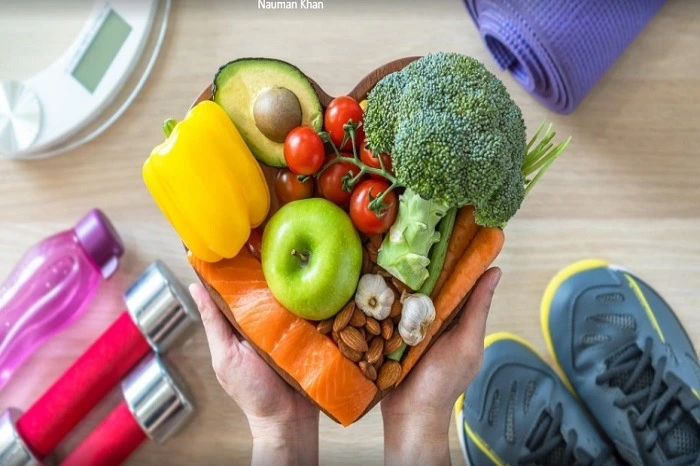Fish
Scientific Name: Vertebrata (subphylum)
Broccoli or Cruciferous Vegetables
Scientific Name: Brassica Oleracea
Beets
Scientific Name: Beta vulgaris
Spinach or Leafy Green Vegetables
Scientific Name: Spinacia Oleracea
Almonds
Scientific Name: Prunus Dulcis
Most people define eating healthy as eating items that are low in fat, fat-free, or part of a well-balanced diet. For some, eating healthy entails consuming organic, vegetarian, or vegan meals. Improving your nutrition can be a crucial component of improving your Health. All veggies contain vitamins, minerals, and fiber, but some are particularly beneficial.
Healthy food protects you from numerous chronic co-communicable diseases, including diabetes,heart disease, and cancer. A healthy diet includes eating various foods and consuming less salt, sugar, saturated, and industrially manufactured Tran's fats.
Depending on their diet, overall Health, and nutritional requirements, particular veggies may provide more health benefits to specific people. If you want to enhance your Health and start taking steps toward that goal, here are the top 5 healthy foods to keep your body fit and healthy.
Top 5 Healthy Food to Eat
Fish
Scientific Name: Vertebrata (subphylum)

Fish is essential to a balanced diet for children,adults, and developing babies. However, most individuals probably don't get enough fish in their diet. Fish is a high-quality, low-in-fatprotein. It is the world's most popular dish. Fish is a great source of omega-3 fatty acids and vitamins B2 and D.
Fish is a fantastic source of nutrients like iron, zinc, iodine, magnesium, and potassium, and it is high in calcium and phosphorus. The American Heart Association suggests consuming fish at least twice a week as part of a balanced diet. Protein, vitamins, and other minerals found in fish can lower blood pressure and the risk of heart attacks and strokes.
Best Fish to Eat:The healthiest fish are high in nutrients and low in mercury, which can be dangerous in some fish varieties. Gomer says that leaner, white fish like flounder or mahi mahi are not as healthy as fatty fish like salmon and mackerel since the former have more readily absorbed fat-soluble minerals and essential omega-3 fatty acids. The FDA recommends that adults consume at least 8 ounces of fish per week, based on a diet of 2,000 calories.
Unhealthy fish to eat:Certain predatory fish, such as sharks,king mackerel,swordfish,and tilefish, can have high mercury levels in their bodies. So do not eat these fish. Many of these fish are cautious about consumption because they can be harmful if not ingested in moderation. Eat up to 12 ounces of low-mercury fish and shellfish every week.
Broccoli or Cruciferous Vegetables
Scientific Name: Brassica Oleracea

Cruciferous Vegetables:Cruciferous vegetables are a class of green foods that provide various critical elements. Eating these veggies regularly makes you less likely to develop several chronic diseases, including cancer and heart disease. Cruciferous vegetables are low in calories and high in fiber, which helps you feel satiated for longer, making them an excellent complement to weight-loss and heart-healthy diets.
More than 3,000 cruciferous species exist, and the most common vegetables are Broccoli, Cauliflower, Kale, Brussels sprouts, Spinach, and Cabbage. Here, we discuss Broccoli.
Broccoli:Broccoli is a cruciferous vegetable with antioxidants and other health-promoting plant components. It may also provide numerous advantages, including eye health, heart health, and illness prevention. It is the best food in the world. Broccoli has several minerals, including fiber, vitamin C, vitamin K, iron, and potassium. This green vegetable can be consumed raw or cooked, but a new study reveals that mild steaming delivers the highest health advantages.
Broccoli contains adequate quantities. Fiber, calcium, potassium, folate, and phytonutrients are all high-quality sources. Phytonutrients are substances that lower the risk of heart disease, diabetes, and some malignancies. Broccoli also contains beneficial antioxidants, including vitamin C and beta-carotene.
Is Broccoli healthy to eat every day?Regularly including Broccoli in your diet can have several positive health effects. Its fiber, vitamins, minerals, and antioxidants support healthy bones, better digestion, and a lower chance of developing chronic illnesses.
Beets
Scientific Name: Beta vulgaris

Beetroots, or beets, are a fresh and versatile vegetable recognized for their earthy flavor and scent. Because of their high nutritional value, they are commonly referred to as superfoods. Beets are colorful and incredibly nutritious, containing essential vitamins, minerals, and plant compounds, many of which have therapeutic benefits.
Beets are one of the few vegetables containing betalains, a potent antioxidant that gives them bright colors. Betalains reduce inflammatory processes and may help prevent cancer and other disorders. Beets are also high in folate, which promotes cell growth and function. Folate helps manage blood vessel damage, which can reduce the risk of heart disease and stroke.
High in Fiber and Nitrites:Beets are an excellent way to increase fiber consumption. Fiber has several health advantages, including reducing cholesterol, keeping blood sugar under control, maintaining a healthy weight, and staying regular.
Ahealthy, fiber-rich diet may lower your chance of developing diseases like heart disease, colon cancer, and inflammatory bowel syndrome. Thomsen Ferreira says, "Nitrates found in beets help to open blood vessels." "That may lower blood pressure and enhance cognitive and athletic performance."
Additional research on this powerful vegetable suggests that the nitrates in beets may also help lower blood pressure if you have hypertension. Research has demonstrated that beet juice lowers blood pressure at the systolic and diastolic levels.
Spinach or Leafy Green Vegetables
Scientific Name: Spinacia Oleracea

According to plant-based recipe developer and registered dietitian Stephanie McKercher, who spoke with Health, Spinach is a well-liked leafy green that may be eaten raw in many different forms, such as salads, wraps, and Heartaches. Known as a versatile leafy green, Spinach can alsobe used tocook foods like pasta, soup, and eggs.
They may result in oxidative stress, which accelerates aging and raises the risk of diabetes and cancer. Zeaxanthin and lutein, the carotenoids that give some plants their color, are abundant in Spinach. These pigments are also found in large amounts in human eyes, and they shield the eyes from sunlight damage.
Nutrients and Minerals:Spinach has a high insoluble fiber content but a low carb count. This kind of fiber could help with digestion. The vegetable spinach is incredibly nutrient-rich. It is rich in calcium, iron, folic acid, vitamin C, vitamin K, and carotenoids.
It has a wealth of plant components, including lutein, kaempferol, nitrates, quercetin, and zeaxanthin, that have been shown to enhance Health. The byproducts of metabolism are free radicals. Spinach has many health advantages. It might lower oxidative stress, support ocular Health, prevent cancer, and control blood pressure.
Is it healthy to eat Spinach every day?They may result in oxidative stress, which accelerates aging and raises the risk of diabetes and cancer. Zeaxanthin and lutein, the carotenoids that give some plants their color, are abundant in Spinach. These pigments are also found in large amounts in human eyes, and they shield your eyes from sunlight damage.
Almonds
Scientific Name: Prunus Dulcis

Almonds are rich in protein,antioxidants, vitamin E, and fiber. Almonds may have health benefits, such as improving heart health and lowering blood pressure. An almond is a fruit seed that develops on an almond tree. The fruit has a hard shell, similar to a pit containing almond seed. Almonds are seen as nuts even though they are essentially seeds.
For thousands of years, people around the world have eaten almonds. Today, California produces over 80% of all almonds. Almonds are used in a variety of cuisines and beverages around the world. Almonds are also the best healthy food for kids.
Nutrients:Almonds are high in beneficial nutrients. They contain high levels of polyunsaturated and monounsaturatedfats, sometimes known as good fats. Unsaturated fats may help you lower your LDL cholesterol. They can be found in almost all liquid vegetable oils at room temperature.
Almonds also contain a lot of magnesium. Magnesium aids neuron and muscle function, regulates heart rate, and maintains bone strength. It also supports the upkeep of a robust immune system.
How many almonds can I eat in a day?Ritika stated that individuals should consume 20-25 almonds every day to maintain a healthy nut intake. For children, a limit of about ten is a reasonable approach. While almonds are extremely healthy, they must be consumed in moderation.
Are almonds good for the skin?Almonds contain6% of the daily value of niacin and 25% of the daily value of riboflavin. Copper, which affects the pigmentation of the skin and hair, is also present in almonds. An essential fatty acid called linoleic acid aids in preventing dry skin. Almonds contain 3.5 grams of linoleic acid per ounce.
What to Eat When Sick
Knowing what to eat when sick can be challenging, especially if you're exhausted, queasy, or unable to taste certain meals. Your illness's symptoms and level of hunger may also determine the appropriate food selections.
Often, the best things to consume when unwell provide you with the energy you need to feel better. Perhaps comfortable meals include your grandmother's homemade soup when you aresickor rice for an upset stomach.
BRAT Diet:The acronym "BRAT"stands for Banana, Rice, Applesauce, and Toast. These foods are often high in carbs but low in fiber, have a bland flavor, are easy to digest, and contribute to less watery and firmer stool. These foods provide nutrients and energy while being gentle on your digestive tract.
Bland Foods:Bland foods are low-fiber, soft, low-fat, and not spicy. The idea is to select foods that are soothing on the digestive tract and easily tolerated. Bland foods are Eggs, Vegetables, Fruit, Lean meat, Pudding, Popsicles and Weak tea.
Your dietary choices may be determined by the intestinal ailment you're treating. If you have intermittent diarrhea, you may be able to tolerate more foods than if you have chronic ulcers, heartburn, or other health problems.
Benefits of Healthy Diet
A nutritious diet has numerous advantages, including strengthening bones, protecting the heart, preventing disease, and improving mood. Healthy eating may help to prevent serious illnesses like heart disease, stroke, and type 2 diabetes. It may also lessen your risk of developing some malignancies. If you get sick, a nutritious diet may help you recover faster.
Eating a nutritious diet is also critical to avoid obesity and weight gain. If you are overweight or obese, a healthy diet can help you lose weight. Regular physical activity and an appropriate diet are significant for Health and avoiding or reducing obesity.
A healthy diet often consists of nutrient-dense meals from all major food groups, such as lean proteins, whole grains, healthy fats, and colorful fruits and vegetables. Healthy eating habits also entail reducing Tran's fats, added salt, and sugar with more nutritious alternatives.
Healthy eating habits improve concentration and focus, which helps kids acquire and remember material more effectively. Omega-3 fatty acid-rich foods, such as nuts and seeds, have been linked to improved cognitive memory, function,and overall brain health.
Eating healthy is essential for cognitive function and mental agility. Nutrient-dense foods like blueberries and avocados provide antioxidants that protect brain cells from harm while improving memory and cognitive performance. Regularly consuming such foods in their diet can improve cognitive capacities for a healthy body.
How to Maintain Good Health
Be physically active for 30 minutes on most days of the week. If you need more time, divide it into three 10-minute sessions. Walking, athletics, dancing, yoga, running, and other enjoyable activities can all be considered healthy forms of movement.
Eat a healthy, low-fat diet rich in fruits, vegetables, and whole grains. Choose a diet reduced in saturated fat and cholesterol while remaining moderate in sugar, salt, and overall fat.
Wear seatbelts and bike helmets, use smoke and carbon monoxide detectors at home, and exercise caution while walking alone. If you own a gun, be aware of the dangers of having one in your home. Take safety precautions at all times.
Brush your teeth after each meal using a soft or medium-bristled toothbrush. Also, brush after drinking and before going to bed. Use dental floss every day.
Bottom Line
Eating a balanced diet rich in nutritional foods such as fish, Broccoli, Spinach, almonds, and beets is essential for general Health. These foods contain vital vitamins, minerals, and antioxidants that support various biological activities and improve overall Health.
Incorporating them into your daily diet will increase energy, enhance the immune system, and improve general Health. Remember that making minor, sustainable improvements to your dietary habits can result in substantial long-term benefits. So, make intelligent choices and fill your body with the benefits of these nutritious meals to live a healthier, happier life.






